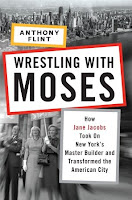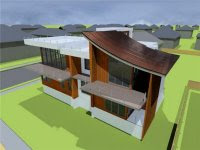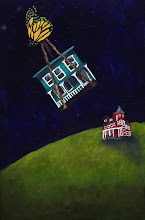


I may be starting the Jane Jacobs fan club soon. I have always admired whistleblowers who step up and defend what is right, though their adversaries may have been rich and powerful. Jane Jacobs' 1961 book The Death and Live of Great American Cities was part of a civil activism not unlike Rachel Carson's Silent Spring or Ralph Nader's Unsafe at Any Speed where Jacobs used her skills as a reporter to preserve Manhattan as we know it. The clash between developer Robert Moses' vision of elevated superhighways through lower Manhattan versus Jacobs' tenacious battle to save Greenwich Village is the subject of a new book Wrestling with Moses: How Jane Jacobs Took on New York's Master Builder and Transformed the American City. It makes me queasy to think that Washington Square Park, Greenwich Village, SoHo, LIttle Italy, and Chinatown could have been razed in order to make way for "progress."
I know cities evolve and what's outdated sometimes needs to make way for buildings suited for modern lifestyles. Otherwise we'd all still be cooking in an open firepit in our hoop skirts. However, it is important to retain some of the character of the landscape, even manmade streetscapes, if they work for people. The scale of mixed use neighborhoods, the placement of parking and town centers, and the ability to walk from shop to cafe to apartment are elements essential to future urban development, and yet one of the most influential builders almost destroyed that exact model to make way for the car. Even today, many communities allow sprawl as the most immediate form of development. But once it starts, the tide is hard to quell. Before you know it, the landscape is cluttered with billboards and parking lots where you'd have to be sort of nuts to risk walking anywhere.
So I offer this maxim for future development: Buildings should give a nod in some way to the location-- either in historical detailing or in addressing the site. Buildings should add to the landscape while being completely functional. Thus, scale is incredibly important -- a building can be completely unique aesthetically but remain contextual in scale, thus giving the streetscape texture without overwhelming it. Ultimately, buildings should tickle the brain, challenge the senses, create their own atmosphere, and surprise the inhabitant. Those seem like developments Jane Jacob would support.





2 comments:
I'll be the second member - can you imagine what would have been lost without her dedication and activism?
It would be terrible to even consider!
Post a Comment